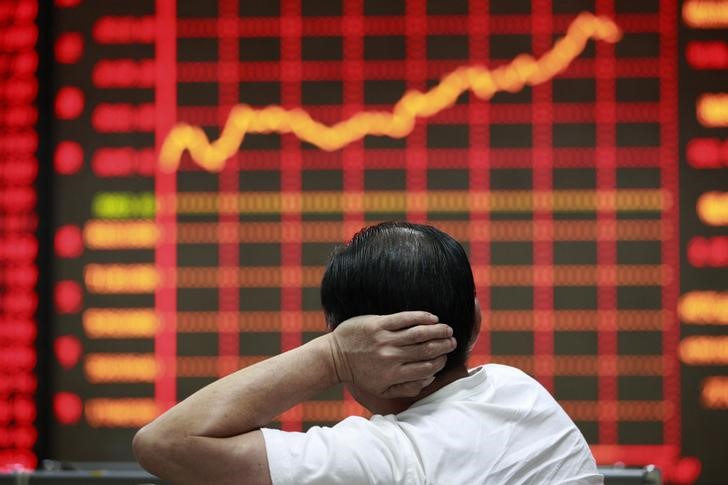© Reuters.
Investing.com– Most Asian stocks moved in a flat-to-low range on Wednesday as weak China data and anticipation of a Federal Reserve rate decision kept sentiment frail, while the Nikkei rose sharply after the Bank of Japan signaled few changes to its ultra-dovish policy.
Regional stocks took some positive cues from a stronger overnight finish on Wall Street. But stocks at large remained subdued with a due later in the day.
The central bank is expected to keep rates on hold, but is also likely to reiterate its higher-for-longer stance on rates- a scenario that heralds more pain for risk-driven assets.
Adding to the uncertainty, weak business activity readings from China continued to trickle in, presenting continued economic weakness for Asia’s biggest economy.
Chinese stocks see little relief as PMI pain persists
China’s and indexes traded in a flat-to-low range, while Hong Kong’s lost 0.2% after a private (PMI) survey showed an unexpected contraction in manufacturing activity through October.
The reading came just a day after a showed a similar decline, with the country’s vast factory sector facing renewed headwinds from slowing overseas demand for Chinese goods.
The readings indicated that stimulus measures from Beijing were so far having only a limited impact on the economy, and that more government spending was likely required to fish the Chinese economy out of a three year-long slump. This notion also kept investors largely averse to Chinese markets.
Bloomberg data showed that foreign investors continued to remain net sellers of Chinese stocks through October.
Other Asian stocks clocked some gains on Wednesday. Australia’s added 0.5% as data showed some improvement in local .
South Korea’s rose 0.6% even as data showed both and disappointed in October. But the country logged a surprise .
Most Southeast Asian indexes traded in a flat-to-low range tracking weakness in China, while futures for India’s index pointed to mild declines.
Japanese stocks surge as BOJ doves take point
Japan’s and the were the sole outliers for the day, rallying 2% each after the BOJ largely on Tuesday.
The BOJ’s decision to only slightly widen its yield curve control policy disappointed traders hoping for a more aggressive move. It also saw markets pricing in a slower pivot away from the bank’s dovish outlook, which points to easy monetary conditions for local stocks.
This notion drove sharp gains in Japanese shares this year, given that the BOJ is the only major central bank still maintaining negative interest rates. The bank also reiterated its commitment to maintaining its asset purchases and quantitative easing policies.
Optimism over the BOJ helped local stocks rise past data showing a sustained contraction in Japan’s .
Read the full article here
